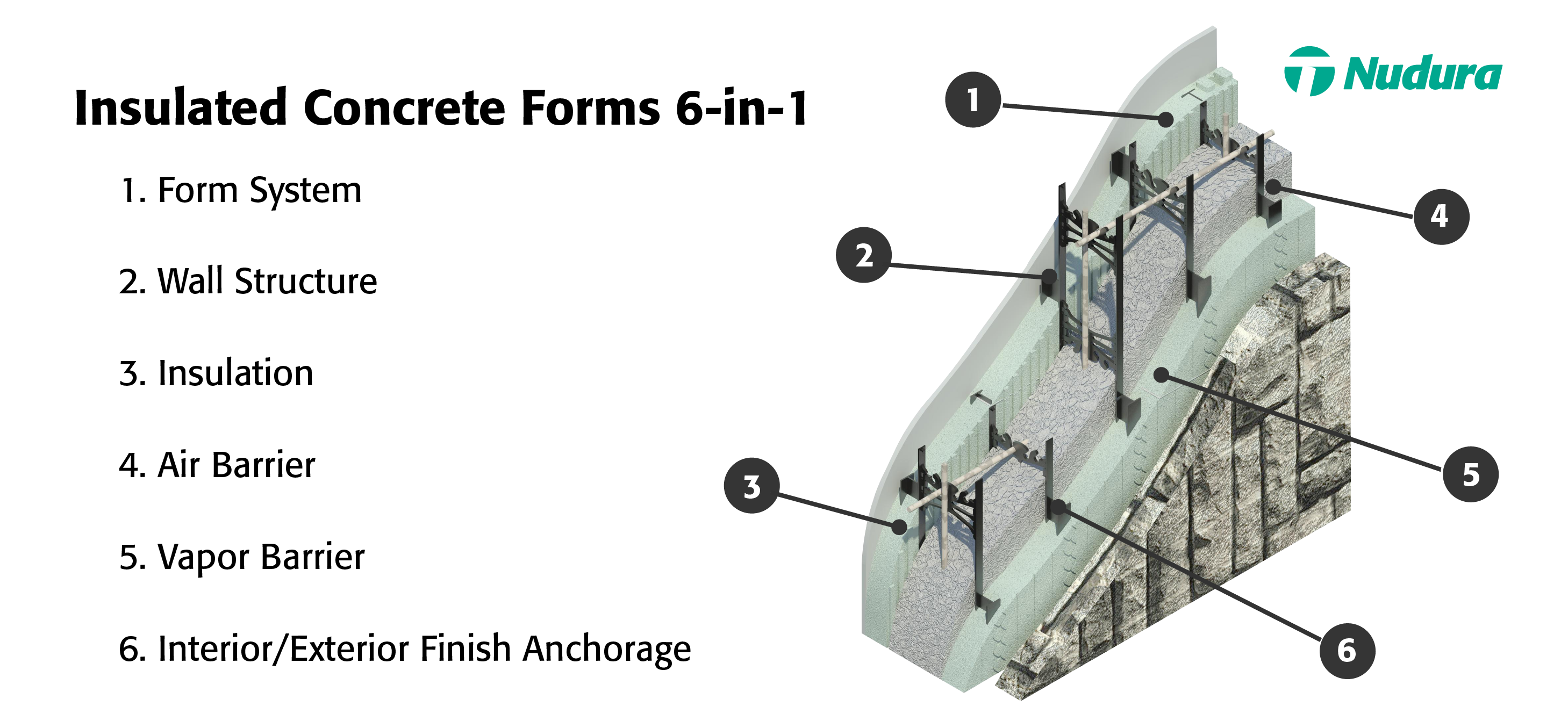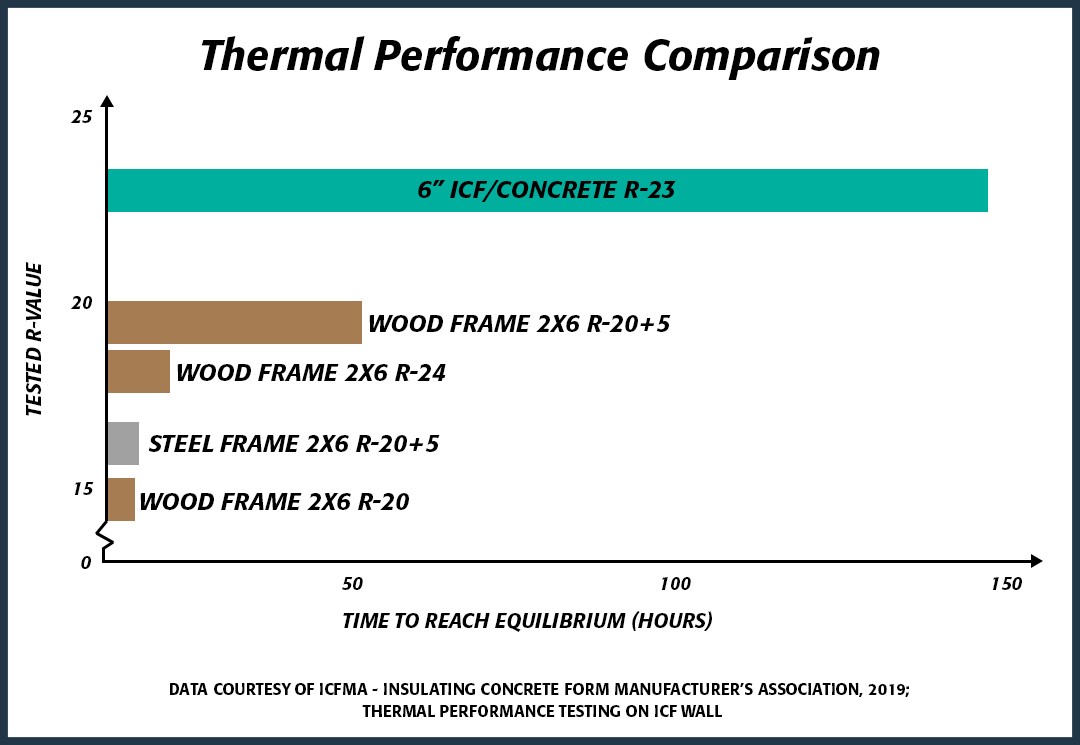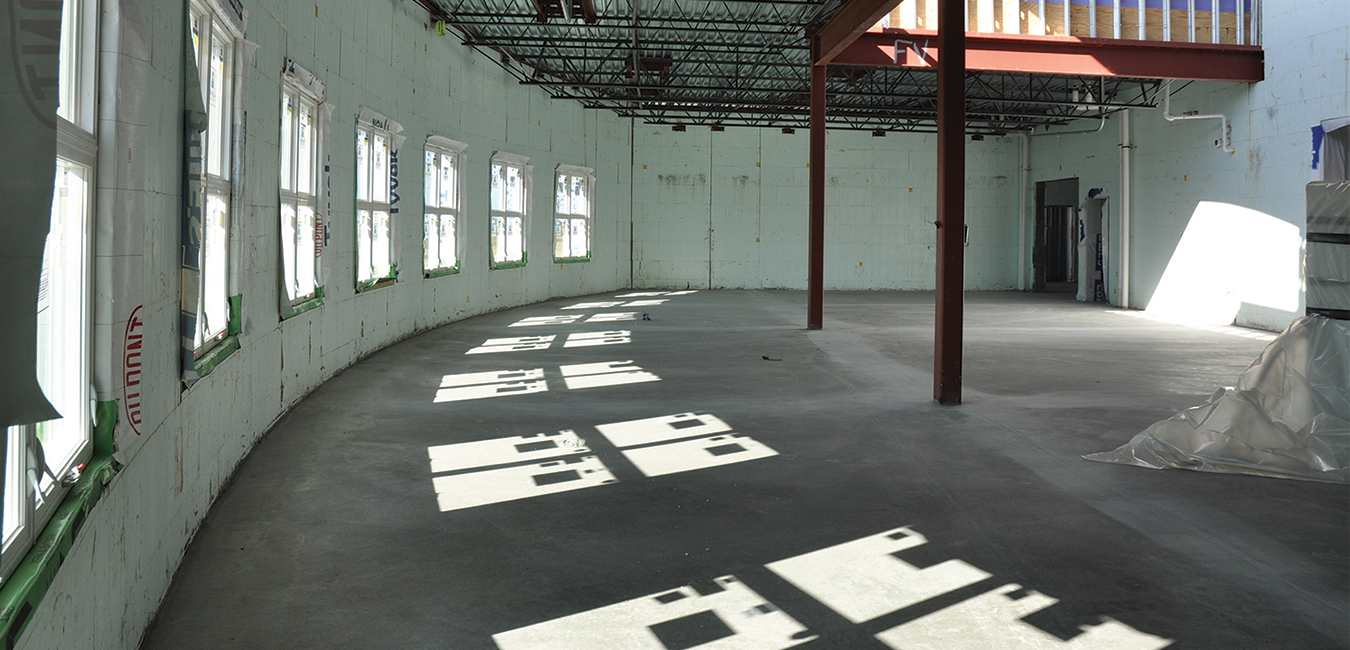
- Products
- Why Nudura
- Nudura Project Applications
- Training Academy
- Resources
- Company
Building a net-zero structure is an ambitious goal, but designing to this caliber is not as complicated as it might sound. Constructing with energy efficiency in mind takes co-ordination between all the project team members and product research to determine the most long-lasting and cost-effective methods to achieve the necessary standards. While insulation is not the sole contributor to a net-zero building, Insulated Concrete Form (ICF) technology, in combination with other energy-saving practices, can improve a building’s energy efficiency while easing the construction process.
What is Net-Zero
What does it mean for a building to be “net-zero”? This term, popularized in the early 2000s, refers to a structure that consumes and generates equal amounts of energy. Energy consumption includes heating, cooling, water use, lighting, and more. Creating clean, renewable energy and minimizing its use is feasible through an integrated approach of incorporating superior insulation between units and on the exterior building envelope, photovoltaics (PV) for electricity, water conversion and recycling, efficient fenestrations with low conductivity, and geothermal energy. Net-zero structures can be found in residential and commercial sectors, and are becoming more common in education, hospitality, and government projects. Using typical construction methods, energy costs can be particularly high for K-12 schools, apartment complexes, army barracks, and hotels, so a more efficient approach is now sought after for new builds. Dave de Sylva, P. Eng., founder of Howland Green Homes, puts it simply, “It is not that complicated…we can be different in how we build and have a positive impact on the environment.”
A building can even go “beyond net-zero” and achieve net-positive status, meaning the development produces more energy than it consumes. The Howland Green Business Centre in Markham, Ontario, was the first net-positive office building in Canada. It attained this status by employing:
- Triple-glazed windows;
- Nudura ICFs, totaling 200 mm (8 in.) of expanded polystyrene (EPS) foam insulation;
- geothermal heating and air-conditioning;
- PVs (solar panels);
- high-efficiency appliances; and
- clean- and grey-water harvesting.
In addition to these and other strategies, energy monitoring is an important factor in net-zero construction. Real-time measurements allow for consistent review of energy consumption and production, enabling any necessary adjustments to be made and validating the owners’ investments.
For Howland Green, ICFs were a significant factor in saving the building owner and its future occupants heating and cooling costs.
Basics of ICFs
Insulated concrete forms consist of two continuous panels of EPS foam connected with a web system. The ICF forms are stacked to the desired building height, reinforced with steel, and filled with concrete. The resulting reinforced monolithic concrete walls can be used for several applications including below and above grade. This method of building is compared to wood-frame, steel-frame, concrete masonry unit (CMU) block, or other structural masonry construction.
As building science becomes more advanced, the construction industry is beginning to see the flaws in the previously tried and true methods of building. ICFs have filled that gap and offer six construction steps in one lightweight, easy-to-install form:
- Form system
- Wall structure
- Insulation
- Air barrier
- Vapor barrier and
- Interior/exterior finish anchorage


ICF manufacturers have a variety of form shapes to accommodate all types of building designs, and the EPS foam comes in various thicknesses to suit all energy code requirements and beyond.
Advantages of ICFs
In terms of net-zero construction, the advantage to building with ICFs is its sustainability aspects. This green-friendly method of building also comes with proven durability, labour-savings, and measurable time and cost savings for the design/build team and end-users.
Durability
The basic purpose of construction is building something that will last and keep occupants safe. Unfortunately, one frequently sees crumbling infrastructure where someone involved in the process must have cut corners. Insulated concrete form technology, on the other hand, has durability at its core. The foam insulation, rebar, and concrete interior ensure a structure that will last for centuries. ICFs offer maximum safety with a fire protection rating of up to four hours, and is proven to withstand winds of up to 400 km/h (250 mph).
The technology demonstrated its resiliency to natural disasters when the Category 5 Hurricane Michael struck the Florida panhandle in 2018. The storm destroyed dozens of buildings and took over 40 human lives. Yet, the sole ICF built-home on the coast managed to withstand the extreme force of the wind and water. The builders went beyond code to ensure life safety and the structure’s longevity in this high-risk region.
Labour Savings
Net-zero status is all about minimizing the amount of energy spent in the long-term maintenance of a building. This philosophy ties into the human element of constructing the building. With fewer people entering the trades and experienced employees retiring, it is becoming more difficult to find skilled construction workers. Some manufacturers offer collapsible forms which make the lightweight product even easier to unload and move around a jobsite. Since ICFs combine multiple construction steps into one, there are fewer opportunities for errors and confusion in the handoff between trades.
Time Savings
Insulated concrete forms can be installed in extreme weather conditions, minimizing downtime on the construction site. Crews can work through cold winters, expediting the time when interior work can begin, and subsequently building occupancy. The operational turnaround is critical in education, hospitality, and residential structures to ensure owners see returns on their investment promptly. Schools typically have tight timelines to meet so that students, faculty, and staff can return for the academic year, and occupied structures want to start leasing out their units as quickly as possible.
Sustainability
Insulated concrete forms are, in essence, continuous insulation (CI), which have no thermal bridging and little room for air infiltration. There is less airflow overall, which also results in added sound dampening. Dave de Sylva calls it “conservation through insulation” with the EPS foam offering a far greater R-value compared to wood- and steel-frame construction.
Thermal performance testing shows ICF structures take the longest to reach a steady state when exposed to extreme temperatures. These results mean that if a building’s power is shut off and no heating/cooling mechanisms are in place, ICF structures would maintain their interior temperature longer than wood- and steel-frame buildings. An R-23 ICF building took over 125 hours to get to the point where the rate of heat being added to the interior of the ICF wall was exactly equal to rate of heat transmitting through the wall in reaction to the outside environment. This is commonly referred to as a “steady state”. In comparison, the highest rated wood-frame building, at R-25, only performed at an R-20 rating, and reached its steady state performance after only 50 hours.

The insulation value of ICFs lessens the pressure on a structure’s HVAC system during extremely hot or cold periods. All of this equates to a reduced carbon footprint.
Cost Savings
The above-listed features of ICFs come together in financial gains for the contractor, designer, and building owner. With the speed of construction comes significant cost savings. Additionally, the lightweight nature of the foam form means less freight cost and easier shipping. Scott Chretien, project manager for Elite Building Group, used ICFs on the Howland Green Business Centre and noted the decreased weight meant they needed less expensive equipment.
“When you get into multi-storey buildings…not having to have a crane onsite is a huge cost saving for the builder and designers,” he said.
Today’s lumber market is fraught with increased cost and demand. EPS foam, on the other hand, offers a more stable cost alternative without having to cut down trees and damage existing ecosystems.
When net-zero buildings use ICF in combination with other environmentally friendly strategies, owners can even make money from their utility companies for the additional energy the structure produces through wind or solar power. Built in 2006, Richardsville Elementary School, located in tornado-prone Kentucky, was the first net-zero school in the United States. It used ICFs for greater safety and was able to reach its energy performance goals. The school was also within budget. It earns over $45,000 a year from utilizing and producing excess solar power. The incentives of net-zero status were so successful in this construction that it became the model for five new schools in the area.

For owner-occupied structures, the building owner can use the decreased energy consumption and cheaper heating and cooling costs as a tool to attract tenants. Whether it is an apartment complex, retirement facility, or office building, the owner can tout lower costs for the end-user. For example, Bronte West Condominiums in Milton (Ont.), another Howland Green construction project, advertises a $600/month cost savings for tenants in utility costs and condo fees due to the sustainable nature of the construction and operation of the six-storey building. Here, ICFs offered an estimated R-36 value, approximately three times greater than the Ontario Building Code (OBC) guideline.
With ongoing energy savings, the building owner has long-term operational cost savings over the lifespan of the structure, maximizing their investment. Greater insulating power also means there is less strain on mechanical and HVAC systems, decreasing the need for ongoing maintenance.
Conclusion
Although net-zero construction and the use of ICFs may seem like a departure from the comfort zone of the industry’s historical processes, the advantages of these new approaches far outweigh any initial fears of change or high price tags. The financial benefits coupled with sustainability, durability, and labour- and time-savings make for a clear solution to everyday building challenges. Insulated concrete form technology offers a comprehensive system with all the performance characteristics and ease-of-install the design/build community demands.
By Scott Carpenter and Keegan Still
Learn more about Net-Zero Construction
CONTACT US
We’re committed to supporting homeowners and design professionals who are interested in or use our products. We’re always happy to help and provide more information.





